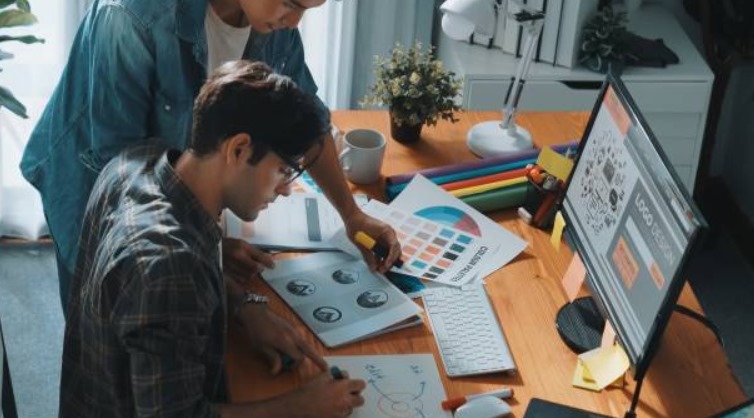The creative industry is in the midst of a digital transformation led by artificial intelligence. Whether in product design, animation or architecture, AI-powered 3D modeling technologies are revolutionizing the way artists and engineers imagine, iterate and communicate digital content. These advances are not just making processes more efficient, they’re redefining the entire design process, yielding smarter design systems, automated modeling and data-driven creativity that is pushing the boundaries of what can be achieved with 3D art and design.
The Evolution of AI in 3D Modeling
The advancements in these fields have been great, especially in the past decade. Over the last ten years advancements in AI 3D modelling have changed significantly, with basic automation evolving into intelligent design systems that can comprehend form, texture and spatial logic. Traditional 3D modeling used to be a manual process requiring painstaking sculpting and long render times. Nowadays, AI-based solutions can digest reference material, learn design rules, and produce complicated 3D assets fully automatically.
Machine learning models trained on vast libraries of shapes and structures now predict how objects behave in space. This allows AI to reconstruct geometry and simulate physical properties with remarkable precision. The result is a new era of efficiency—one where artists can move from idea to model in minutes instead of hours. The growing integration of AI 3D modeling advancements across design platforms marks a fundamental shift from technical craftsmanship toward intuitive, creativity-first workflows.
Generative Design: The Future of Intelligent Creativity
Among the most exciting advances in AI3D modeling is generative design. This method applies algorithms to generate and evaluate millions of design possibilities within user-defined parameters, such as shape, material, and performance requirements. Rather than meticulously designing each variation, designers allow the AI to do the heavy lifting, yielding optimized models that excel in aesthetics and usability.
Generative design is especially useful in areas such as architecture, engineering and product manufacturing, where the way something performs is as important as how it looks. Thanks to advances in AI 3D modeling, these industries can now produce designs that are lighter, stronger and more efficient than ever before. The AI considers structural stability, material usage and environmental effects, and the results are unexpected solutions that may not have been possible for humans to think of on their own.
AI-Enhanced Realism and Rendering
Realism has always been the benchmark in 3D modeling and today s advances in AI 3D modeling are pushing the boundary further than ever. Deep learning algorithms can interpret lighting conditions, the textures of surfaces, and the properties of materials to produce photorealistic images on their own. Everything that used to take hours of hand painting and rendering can now be done in real time with AI assistance.
For instance, AI-based rendering engines can accurately reproduce natural lighting, reflections and shadows enabling artists to see what the final output will look like immediately. These features not only improve realism, they also enable artists to iterate more quickly by trying out different looks without waiting around for long dailies. With the advances in AI 3D Modeling digital assets no longer appeared as synthetic — they now reflect the real world with breathtaking realism, transforming industries like video games, film, and virtual reality.
Workflow Efficiency and Accessibility
Another major impact of AI 3D modeling advancements lies in workflow optimization. AI now automates tedious tasks like mesh cleanup, UV unwrapping, and topology correction, freeing artists from repetitive technical work. These intelligent systems analyze project goals and automatically apply the most efficient modeling techniques, significantly reducing production time.
Perhaps most importantly, AI has made 3D modeling more accessible than ever before. Beginners who once needed years of training can now create professional-quality assets using intuitive, AI-driven tools. This democratization of technology means that creativity is no longer limited by technical skill. Through cloud-based collaboration and real-time updates, AI 3D modeling advancements are fostering inclusive creative communities that span across industries and continents.
The Future of AI in 3D Design
The next generation of AI 3D modeling techniques will enable even closer integration of creativity and computation. Future systems will not just create models but also the artistic intent, context, and emotion behind them. Imagine AI that reads a concept outline, guesses the intended atmosphere, and renders a fully textured 3D scene—all in a matter of minutes.
These breakthroughs will redefine collaboration between humans and machines. Designers will spend more time telling stories, while AI does the heavy technical lifting. As algorithms continue to improve, so will the potential for revolutionary integration of 3D design, animation and simulation to create hyper-realistic and fully interactive virtual worlds.
Conclusion
The continuous innovation in AI 3D modeling advancements signals a new era for the creative industries. Combining human creativity with machine reactions, AI is not supplanting artists—it’s extending their capabilities. As 3D modeling technology advances, the process of creating three-dimensional models will become increasingly faster, more intuitive, and more expressive than ever before, leading the way to the next frontier of digital creation.

